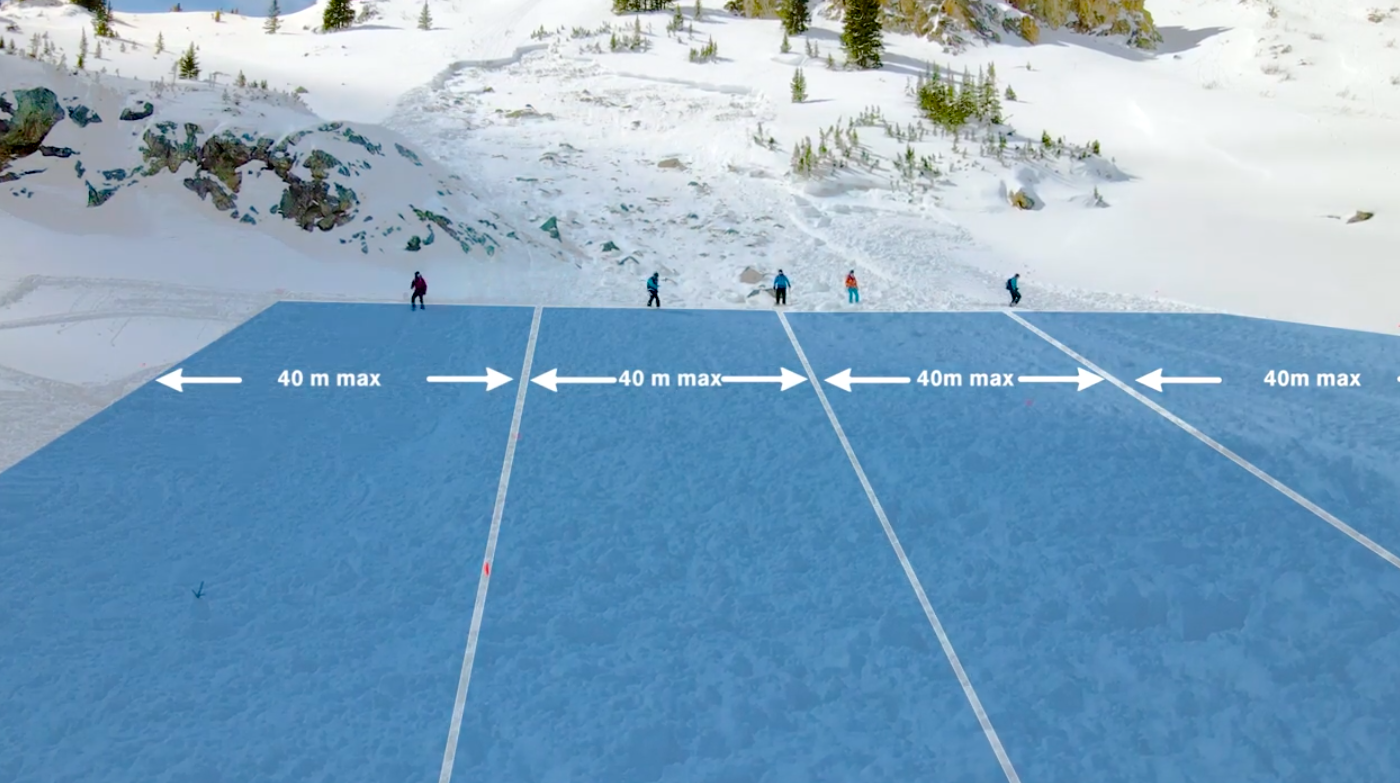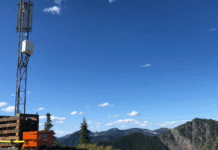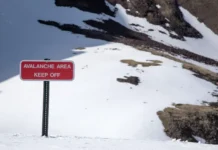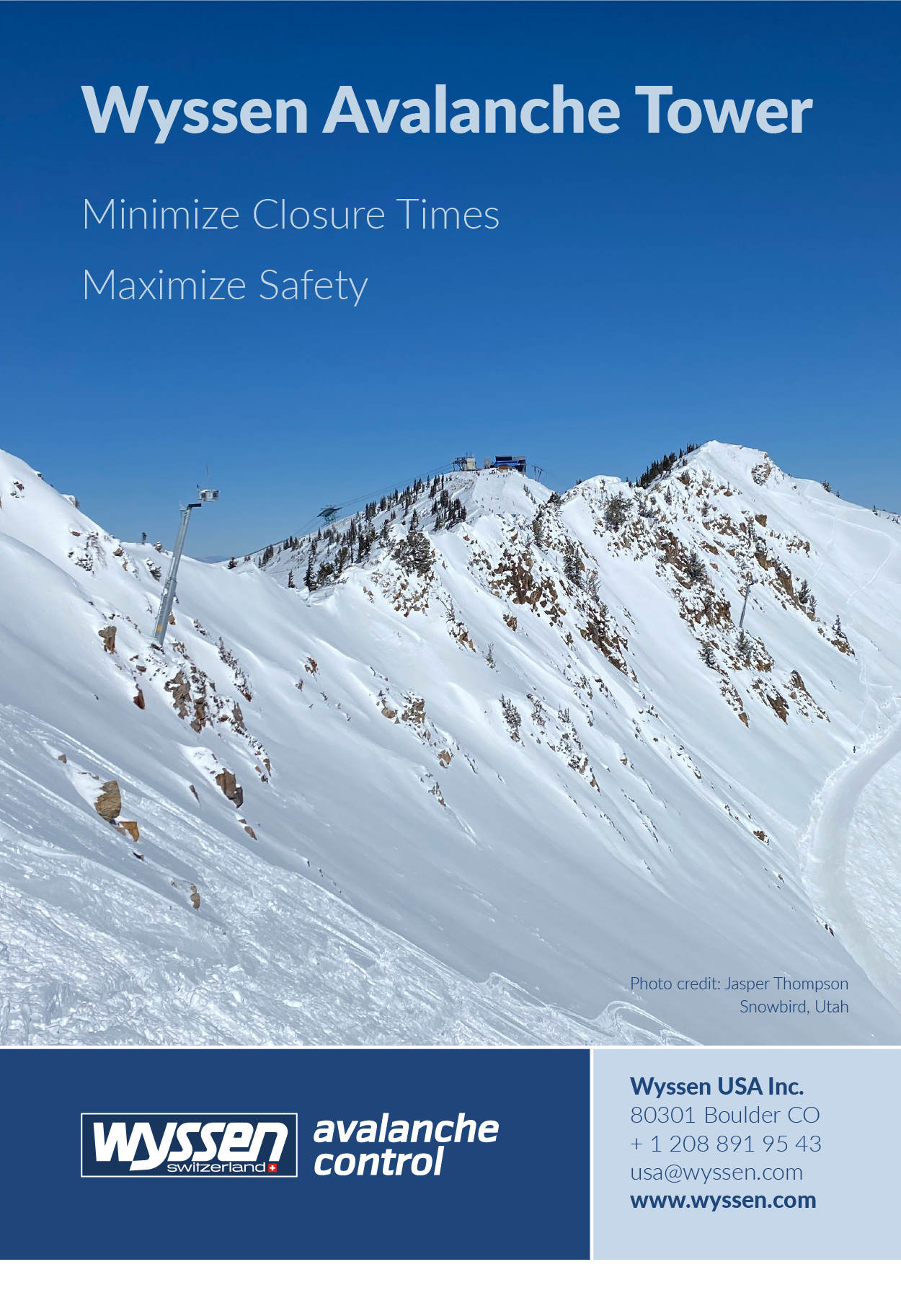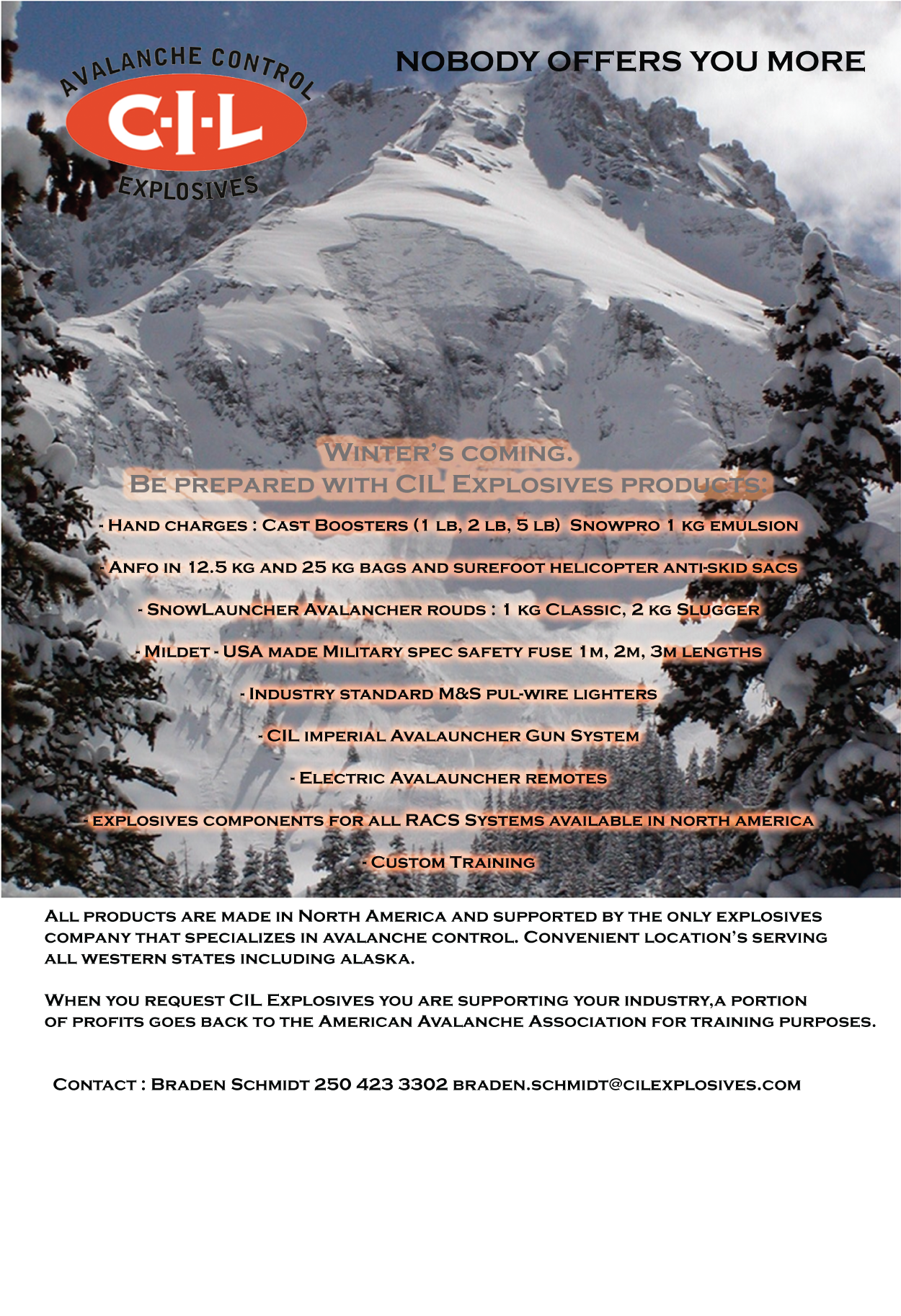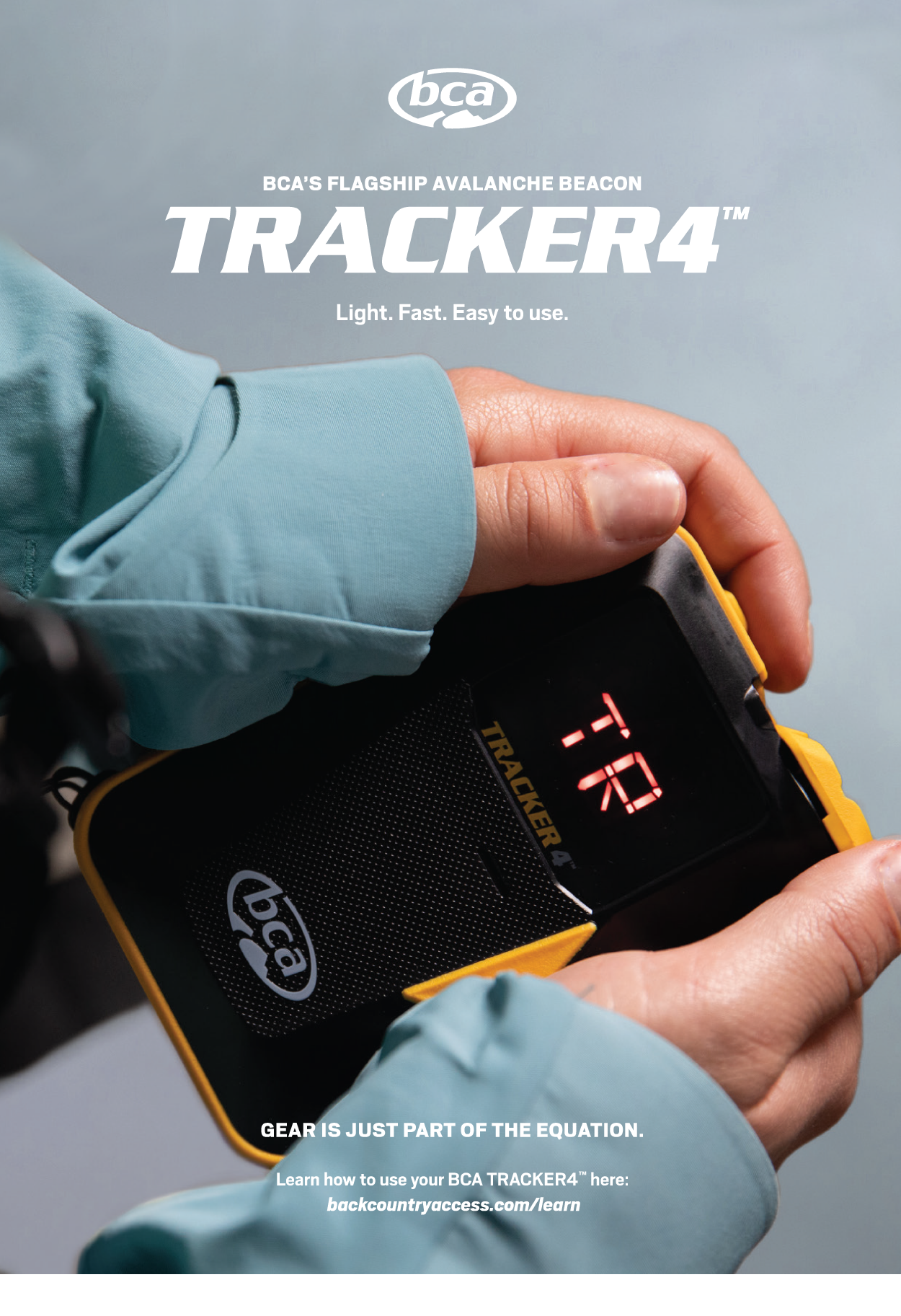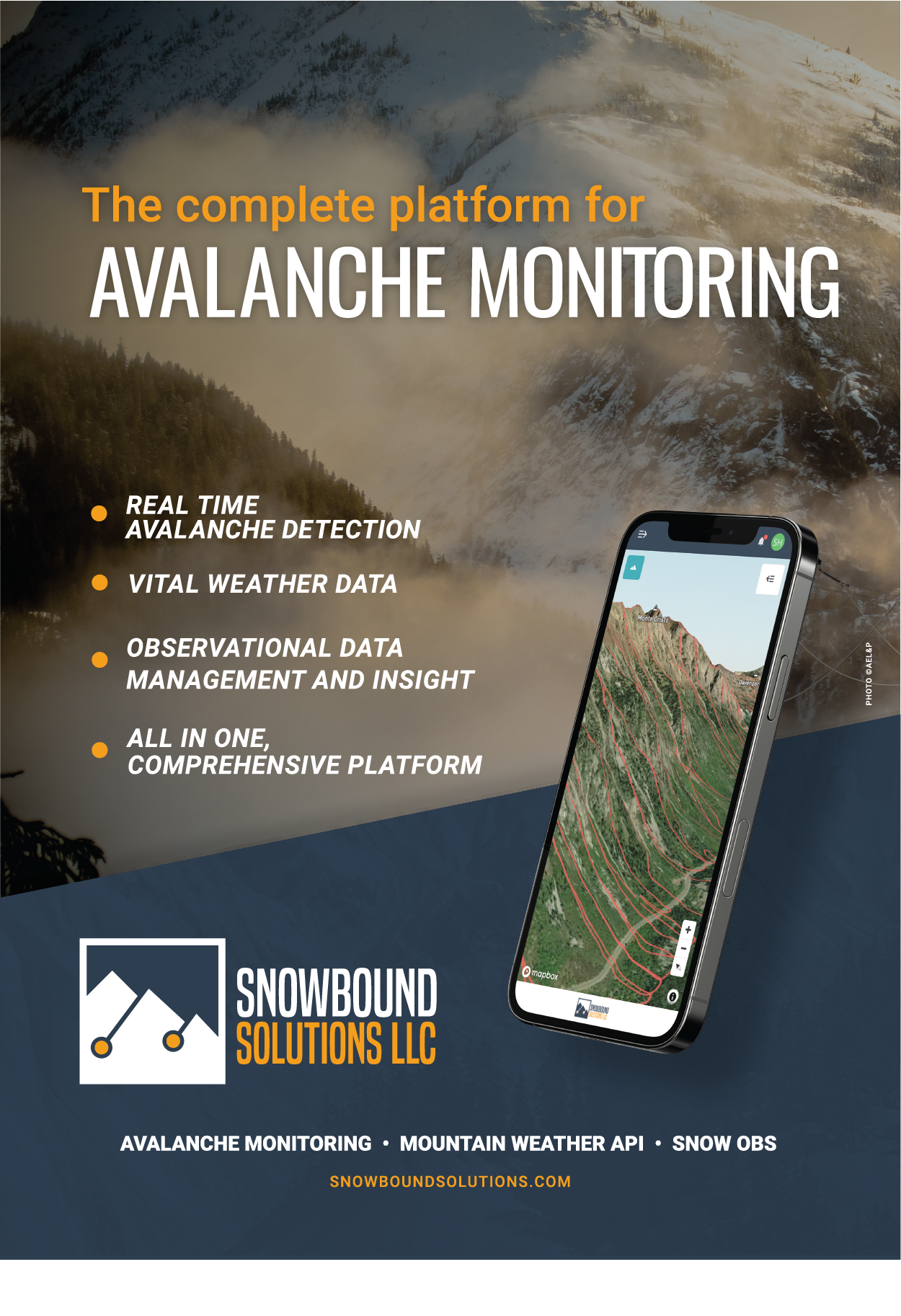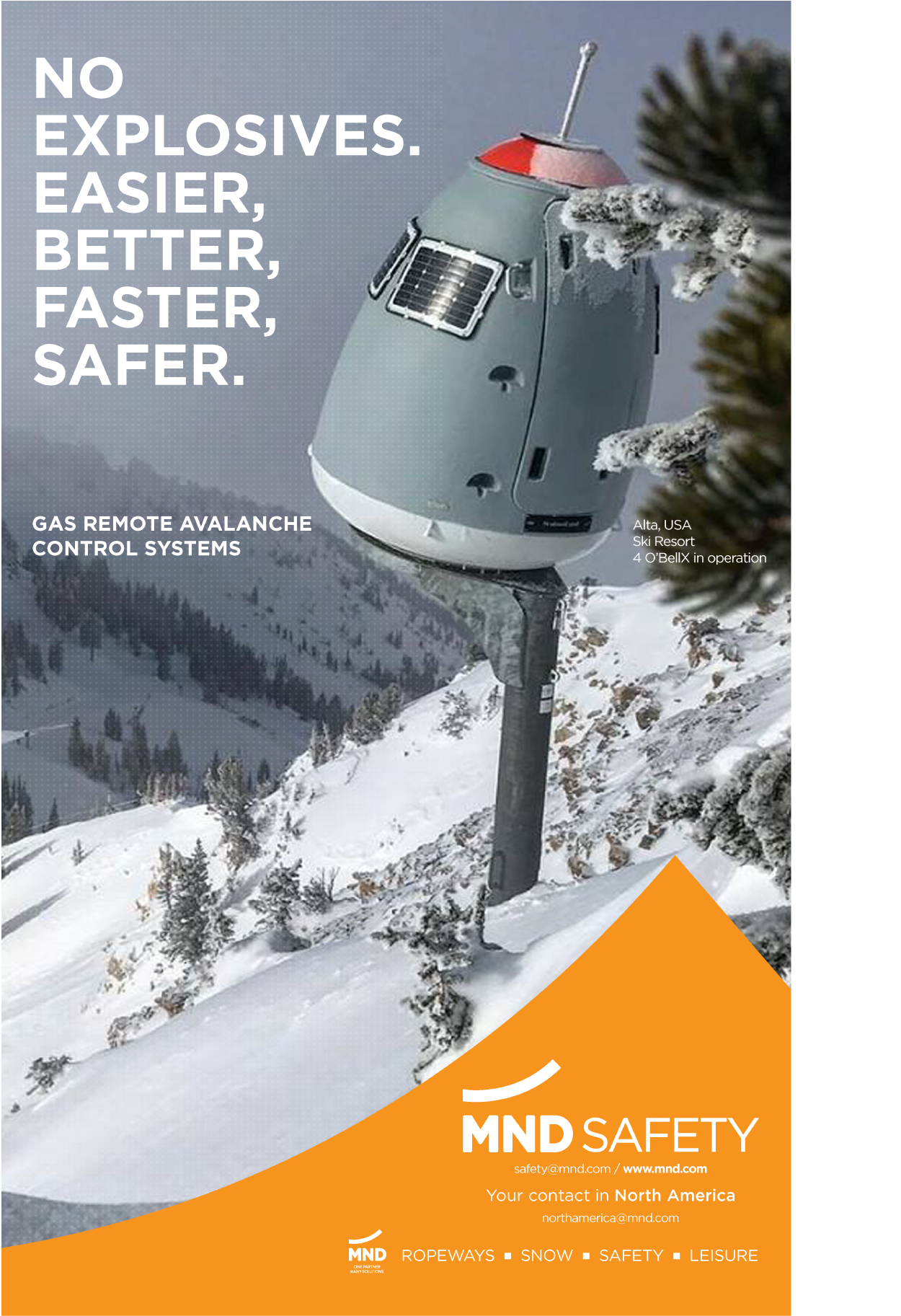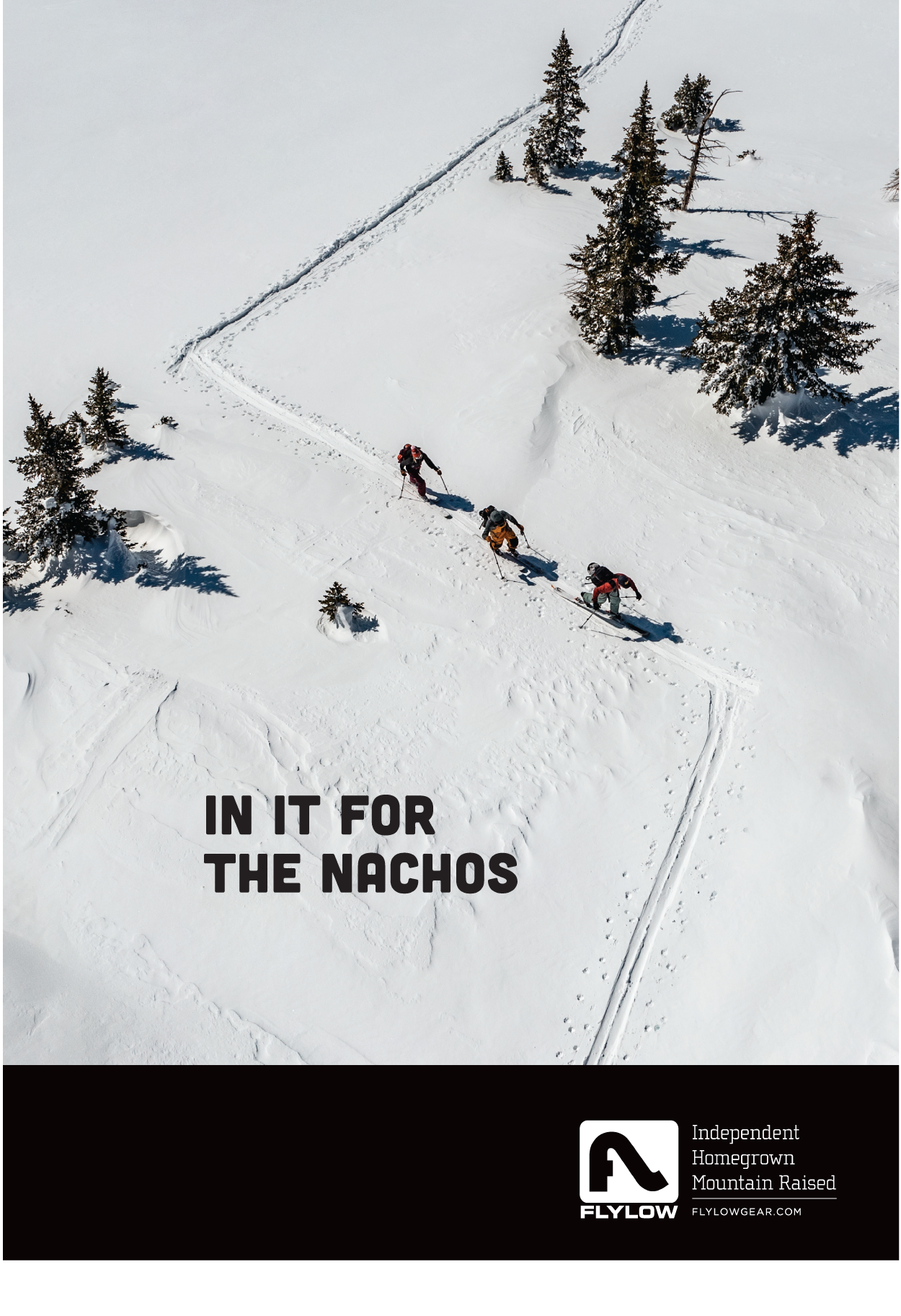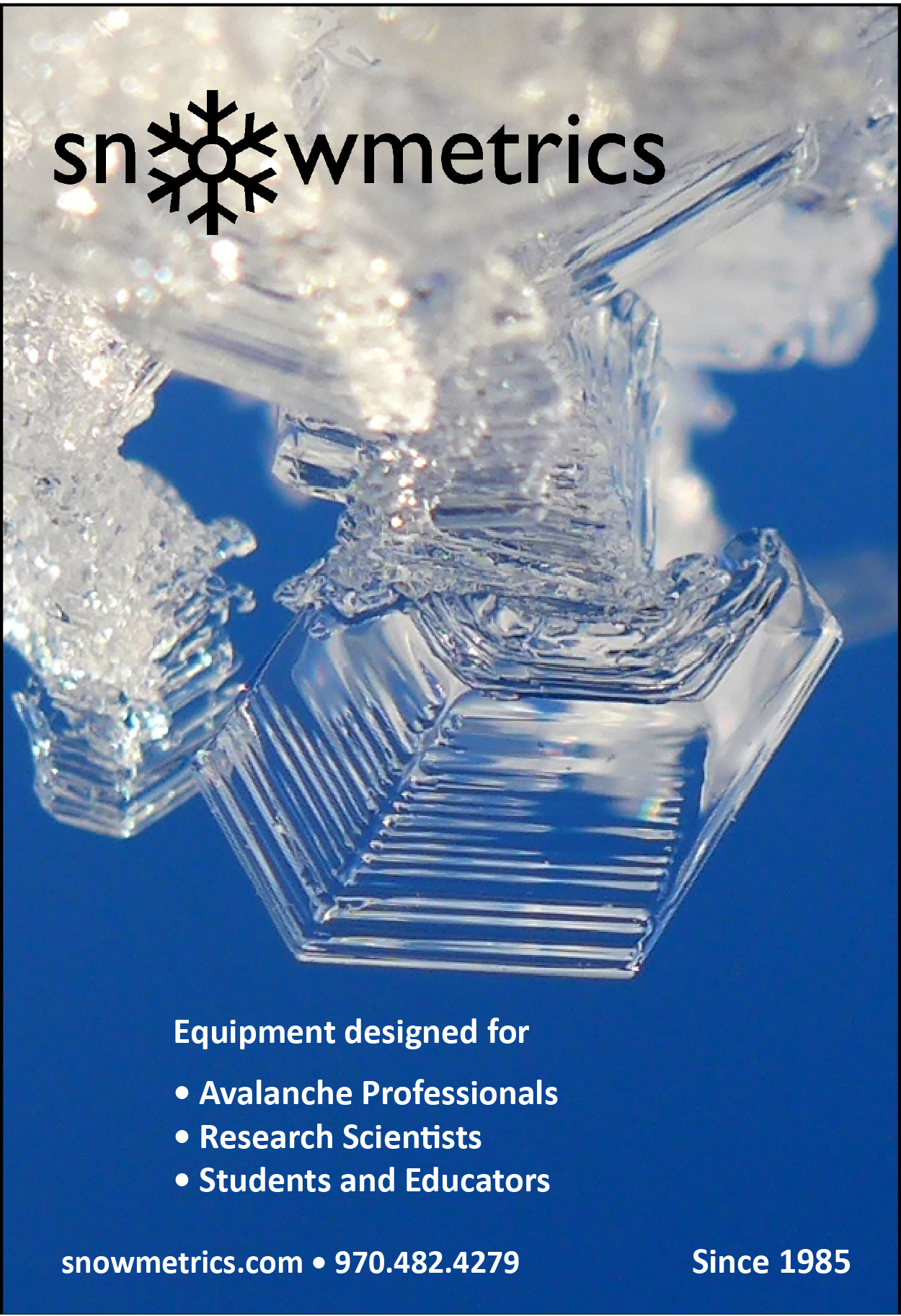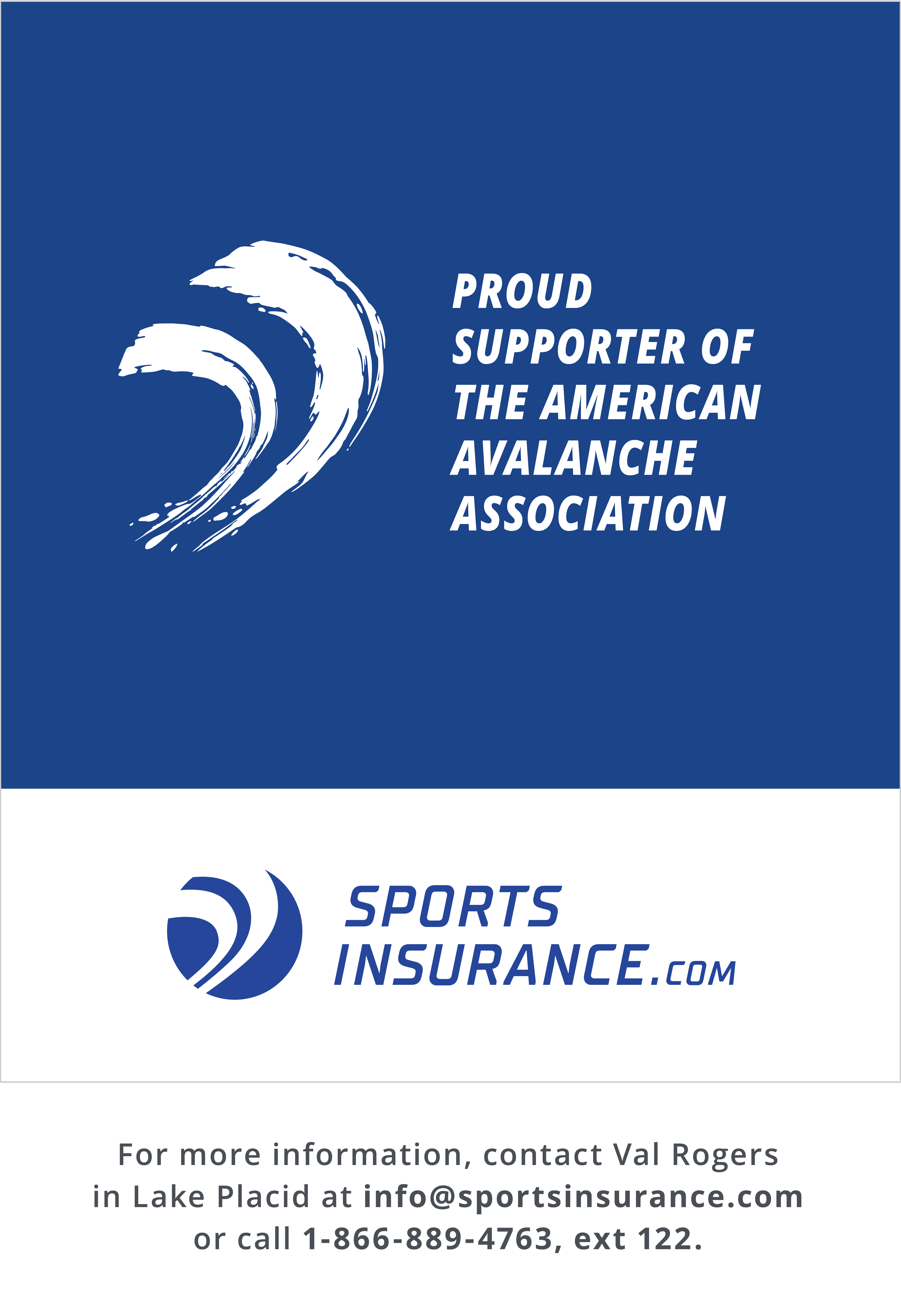The entire article GROUP SEARCHING:USING PEOPLE POWER TO SIMPLIFY COMPLEX BURIALS By Bruce Edgerly and Jim Conway appears in TAR 40.3
The ability of a single expert rescuer to find multiple buried beacons is an established standard required to pass both guide and professional avalanche worker training in the U.S. and Canada. This is an incredibly valuable tool for any rescuer to have, whether a pro or a recreationist. The purpose of this article is not to question its utility, since it’s the foundation of any rescuer’s skill set. But is it always appropriate? In many cases, when instructing advanced recreationists, that time might be better spent teaching how to lead a group rescue, sometimes called “searching in parallel.”
A seasoned rescuer typically has a range of tools and techniques to expedite the search and the rescue of a victim(s) based on many factors, including the size and accessibility of the avalanche debris, the number of rescuers available, and the skill or experience of available rescuers. While much energy has been expended teaching and testing single searcher/multiple victim rescues, the skill of organizing and managing a group of capable rescuers has not been emphasized much outside of Avalanche Search and Rescue (AvSAR) curriculums, at least in the United States. American Avalanche Association (A3) curriculum for Basic Avalanche Rescue has no requirement to actively teach Searching in Parallel: the topic of-ten gets a passing reference in one of the course’s PowerPoint slides, but is typically not practiced in the field (often due to time constraints or student capabilities).
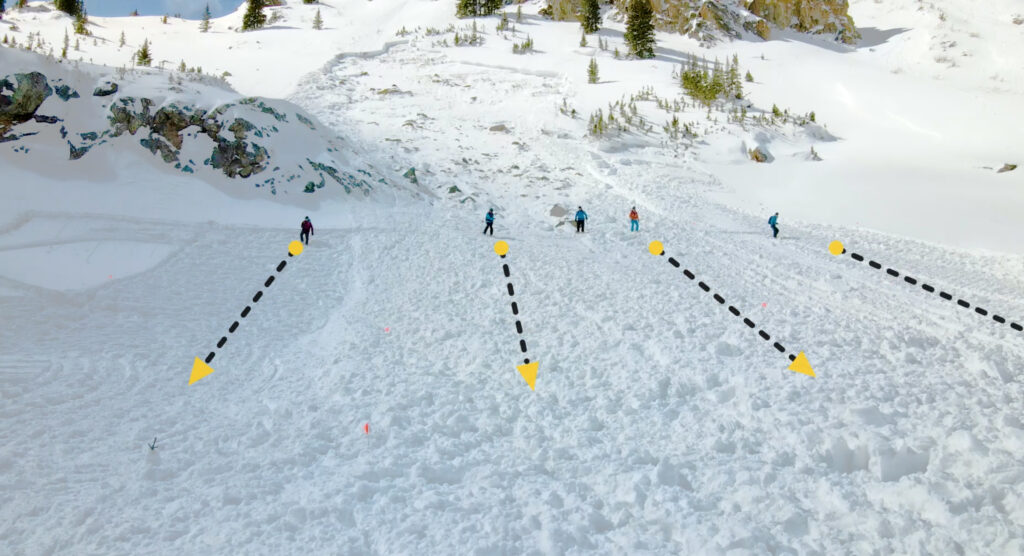
it is essential to maintain “lane discipline.” Lane
widths should roughly equal the width of the
debris divided by the number of available beacon
searchers.
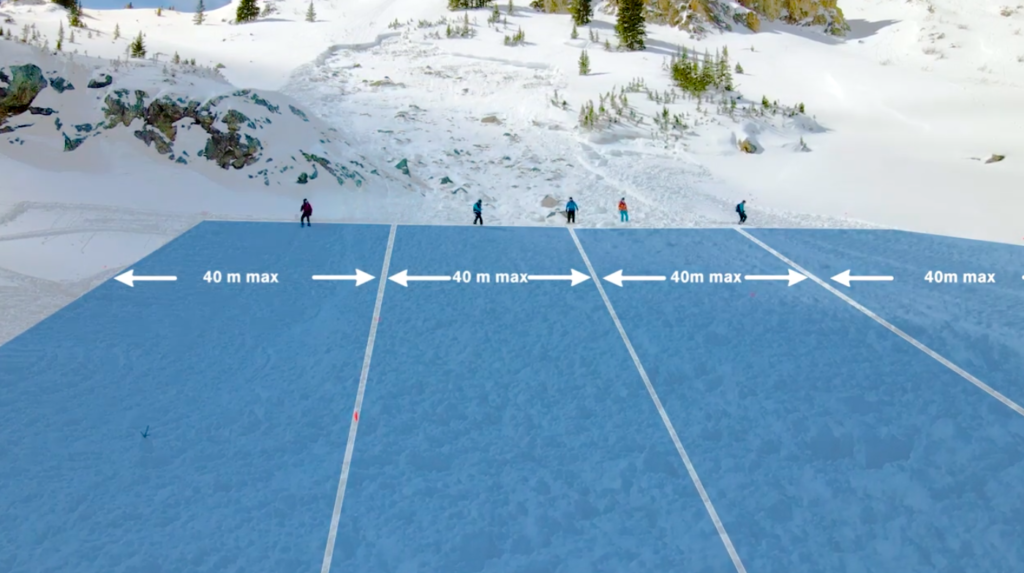
dependent on the scenario, but can vary from as
narrow as five meters to as wide as 40 meters or
each manufacturer’s maximum recommended
search strip width.
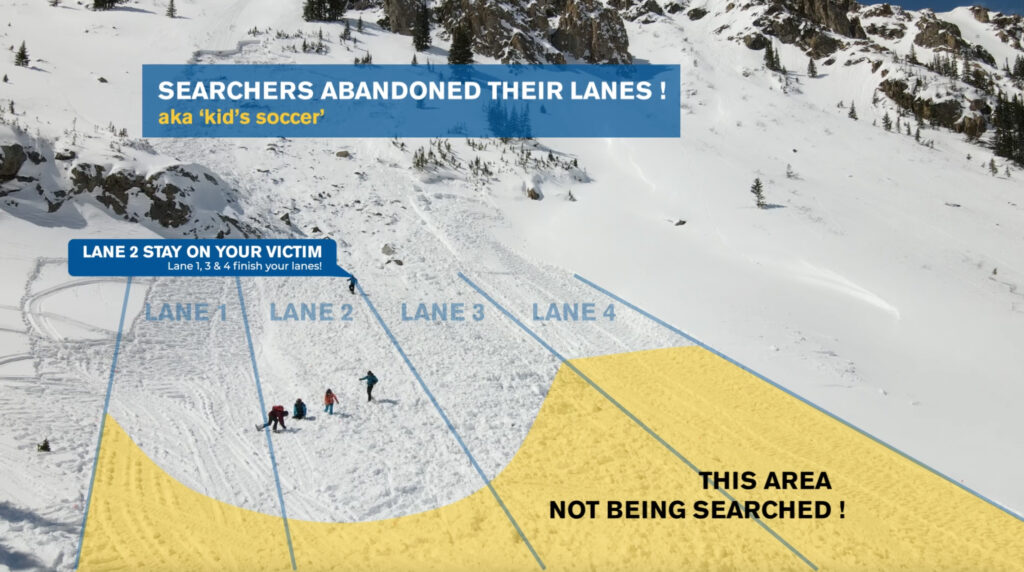
flocking to the first detected signal, but other areas
remaining unchecked. This is analogous to early-
childhood soccer, where players often swarm the
ball, leaving the rest of the field undefended.
At our annual BCA ambassador training, held each fall on the sandy expanses of Boulder Reservoir, we teach and practice all these methods, with multiple scenarios set up with 2, 3, 4, and even an unknown number of buried transmitters. It was during one of these training sessions in 2019 that our team became aware that even ex-pert users need additional practice in the area of organizing and managing group rescue scenarios. We teach our employees and ambassadors marking, signal suppression, scanning and big-picture functions, micro search strips, the three-circle method and even “micro circles.” But how many advanced users get regular training at leading a rescue team in a parallel search? What has come into focus is that the ability to lead a group rescue is as challenging as managing the technical nuances of a complex multiple victim scenario with a single searcher.
More recently, we’ve included group searching scenarios in our training, where multiple searchers line up and search in parallel for multiple transmitters. Invariably, all transmitters are located in less than half the time that it takes for a single rescuer to find all the victims consecutively. “Why isn’t this part of standard avalanche rescue curriculum in the US?” is a common refrain from the professional avalanche instructors on our team. Anecdotally, BCA ambassador and avalanche educator Jim “Sarge” Conway has been piloting course segments that put more emphasis on group rescue techniques using the parallel search method. “My initial observations indicate people are actually pretty capable of managing other people when the challenge is put before them” Jim says. “And the effectiveness of the group after even half a day of intensive training (everyone taking turns leading a team) is remarkable.”
Based on Jim’s anecdotal observations and BCA’s continued commitment to improve all backcountry users’ skill sets, we produced a video this year called “Avalanche Group Rescue Techniques: Searching in Parallel.” This video was re-leased in December 2021 and can be viewed above.
The key concepts of the method are 1) lane discipline, 2) concise communication, and 3) effective leadership. All three are required for a successful outcome. A leader takes in all the in-formation from the rescuers to think multiple steps ahead to further expedite and streamline the rescue.

available, then the leader should readjust the lane widths to ensure the entire
debris pile is checked below the excavation area.
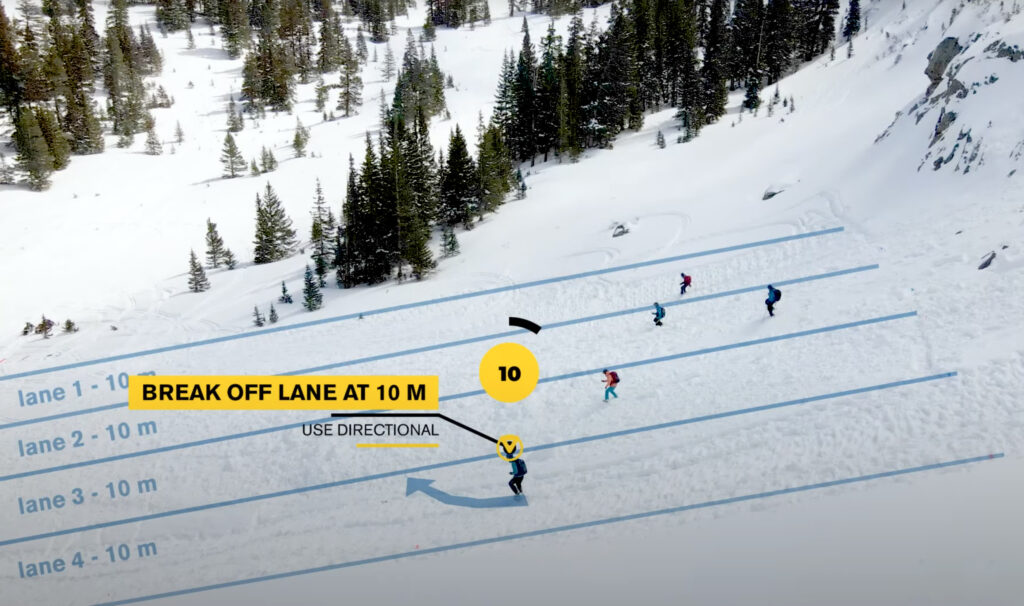
were available so search strips could be reduced to 10 meters. Beacon
searchers should stick to their lanes and commit to the fine search only once
their distance reading is less than 10 meters.
Lane discipline is all about spreading the rescuers apart, no wider than 40 meters or each manufacturer’s recommended search strip width be-tween searchers (width used depends on number of searchers, debris size, and searcher experience) then sticking to those lanes. This prevents all the searchers from swarming to the closest victim, like six-year-olds playing soccer. The crux move is to abandon your lane only when the distance reading on your transceiver is less than your lane width.
The second key concept, concise communication, is all about relaying critical information to the leader, but not overloading him or her with information. Relay info only at the most crucial stages: initial signal acquisition, decreasing distance readings in 10-meter increments, lane abandonment, probing, and victim depth. In-deed, very little has been published on what it is relevant to communicate in a rescue. Imagine four or five rescuers all calling out their course search distance readings every two meters: this can be overwhelming to a leader. In this video, we present a disciplined communication system that delivers necessary information in a more concise format. This provides the leader with better situational awareness and enables him or her to take the intensity down a notch with a more deliberative communication process.
The third key concept is the importance of an effective leader. The leader’s job is to maintain the integrity of the lanes, to minimize distracting “rogue” signals from interference or bystanders, and to allocate resources to maximize survival chances. Ideally, this is best accomplished by following behind the designated searchers instead of participating in the searching, probing, and shoveling process.
Once a victim is found, the leader has the option to assign probers and shovelers to that victim and have the remaining rescuers continue locating all the victims. In that case, the leader should increase the lane widths below the first found victim so no areas are left unchecked. If one or more rescuers reach the end of their lanes without performing a fine search, they can also be re-as-signed, most likely to search any remaining un-checked areas in the deposition area.
The use and efficacy of this method is very situationally specific and there are many factors that can make this more or less effective compared to other methods (ie: number and experience of searchers). The method presented in the video is also a definitive “lead from the back” technique with a dedicated leader. Some situations, such as a smaller group, may dictate a ”lead from the front” strategy where the leader also has a rescue task such as transceiver searches. Leading from the front is obviously a more complicated task as your brain must multitask: As far as training goes, we feel initially it is best for people to focus primarily on building their leadership skills before taking on a multitask scenario.
Part of the reason this particular skill set does not get the attention it deserves is simple logistics. Beacon training parks and patroller practice fields make it easy for pros or recreationists to practice advanced multiple beacon rescue skills in a self-paced format. Organizing a group search scenario involves more time and commitment from a team to implement. To offer more opportunities to train with groups, and to further gain insight and data as to what works best, BCA and Conway will hold Practice is Faster group search events this season at select locations in the U.S. If you’d like to host a Practice is Faster event with BCA and/or Sarge, please e-mail edge@backcountryaccess. com. BCA will also partner with Backcountry Magazine this season for Practice is Faster group search sessions at Backcountry Basecamp, the publication’s annual tour of resorts to promote backcountry riding and safety. Some organizations and teams are already prioritizing this skill and our hats are off to them. Searching in Parallel is another important tool for every pro or advanced recreationist to have in his or her rescue toolbox.
–

